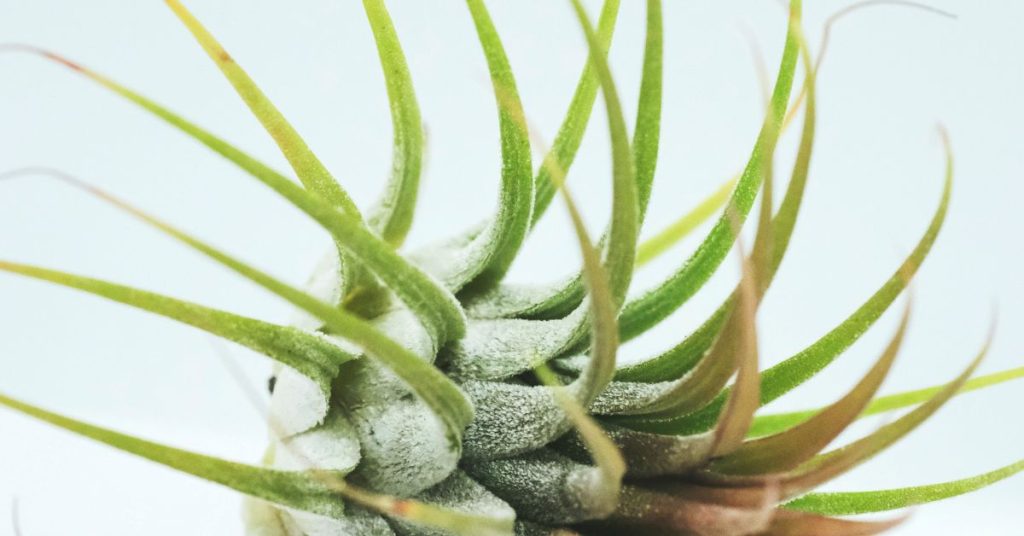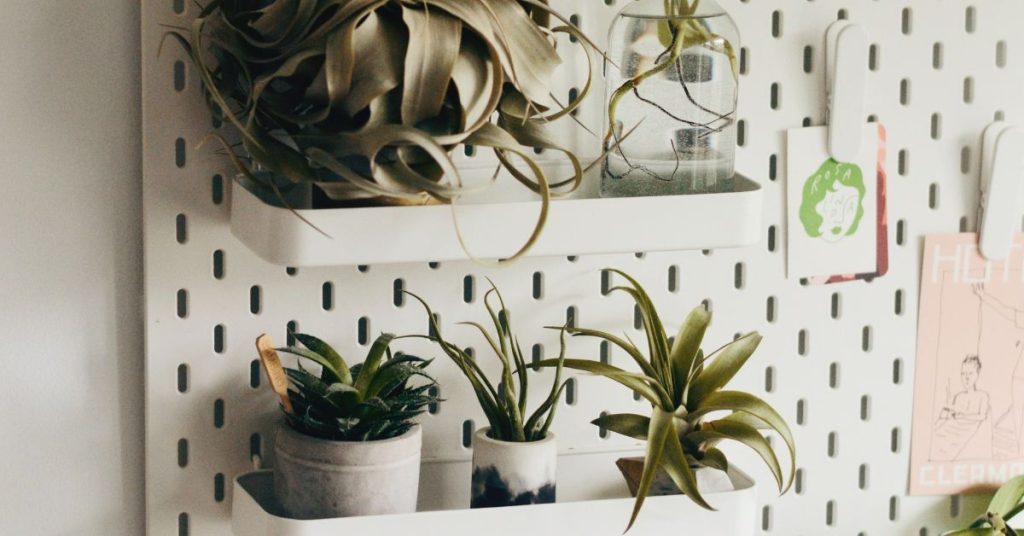Introduction
Air plants are very often small, easy to cultivate, and do not require soil. They’re popular as houseplants because they’re simple to care for and don’t require much sunlight to grow. Because they don’t need to be placed in the soil, most people like to hang them in various kinds of wood, which appear more beautiful and easier to hang.
However, if you’ve ever had no experience how with mounting or attaching air plants to wood. Then you’ve come to the correct place because in this article we’ll show you how to hang air plants on wood smartly and adequately, so stay with us.
Let’s start with the question of what should be considered before attaching air plants to wood.
First of all, we don’t usually suggest using glue to attach air plants to something because it makes it more difficult to water and care for your plants. You can, however, use plant-safe and waterproof adhesive for this.
Other side copper wire or accessories can be poisonous to air plants, especially if they are exposed to moisture regularly, which increases the copper’s reactivity with the environment. It is not sufficient to simply ensure that no copper wire is used.

5 Ways to Attach Air Plants to The Wood
If you follow our procedure and recommendations, you can securely hang your air plants from a wire, string, or fishing line. These air plants do not require soil since they collect nutrients and water from the air via scales on their leaves. We’ve spoken about some options for attaching, so it’s enjoyable and straightforward to follow the methods below.
1. Use a Wire
Attaching air plants with wire is one of the easiest and most vital ideas to attach your air plants to the wood. Using wire to attach your air plants, you will profit while removing them and soaking them in water.
However, you must be patient and meticulous in your job by looping the wire around the bottom half of your plant, wrapping it around the base a few times, and then attaching it to your wood.
Before attaching it to the wood, make sure you’ve inserted the screw into the wood. Don’t forget to put a few loops on one end to create a bowl-like appearance and a hook on the other end to keep your plant upright.
Any wire is good as long as it is not rusted or copper. Because rust and copper are harmful to air plants, try to avoid these two types of wire.
2. Use a Glue
You can use a glue gun or Liquid Nails to mount your air plant. Superglue should not be used because it may destroy the plant. But it is possible! When gluing, use a plant-safe adhesive such as E6000, which is also waterproof.
Watering adhesive air plants is best accomplished by softening the glue and removing the plant. You can alternatively soak the glued air plant and ensure that it dries in 3-4 hours. You can attempt removing your air plant by wetting the base and wiggling it, and it will separate from the glue over time.
On the other hand, when glueing, take special care not to glue on any leaves. Just dab the glue on the bottom of the plant and let it dry before attaching.
3. Use a Fishing Line
On the other hand, a fishing line is clear and would be a decent choice if you don’t want anything too noticeable. The ideal method is to weave the fishing line through the plants and then tie a simple knot on the wood.
You can also hook one end of the line to your wood and hang a plant from the other. Make a floating arrangement of this plant by hanging many of these hanging air plants in varying lengths.
The main disadvantage of using a fishing line to secure the plant is that it can injure it if it is knotted too tightly. So, when tying knots with a fishing line, don’t tie your air plants too tightly.
4. Use Air-Plants Root to Attach
Air plants’ roots do not suck in nutrients or water, and their primary function in the natural is to attach plants up to trees. You can allow your plant to gradually attach itself to a piece of driftwood, but you must be patient to see the end outcome.
Air plants are incredibly versatile due to their soil-free nature. If they get sufficient indirect light and airflow, they will catch anything soft with their roots. Once their roots have adhered to the wood, they will have a relatively strong anchor to keep them in place.
Remember to use softwood rather than hardwood to allow them to quickly catch up with the root. We can assure you that you will receive a solid and natural attachment if you try this root catch-up technique.
Few Tips To Attach Your Air-Plants
Air-Plants don’t need soil, but it doesn’t mean that they will survive and stay healthy without any maintenance and nutrients. They also need to be placed in the correct position right way to receive moisture and sunlight. Here we have discussed some tips for attaching air plants so that your plants can stay healthy.
- We recommend dunking or spraying your air plants if you use adhesive to mount them. But don’t soak them because it may force their roots to become adequately rooted. Shake out any extra water from your plant to reduce the likelihood of it rotting. Because you are unable to remove the plant for watering, these are critical suggestions to follow.
- When mounting your air plants, make sure to do so horizontally or upside down. Because while you mount them after soaking, if it’s not mounted horizontally, the water can accumulate and can cause them to rot. So always remember to mount them horizontally to help prevent water from gathering in their bases.
- It is essential to keep track of how much moisture and sunlight your air plants are getting. Always try to keep an eye on the outdoor temperature of your house in the summer. It is advisable to bring your air plants inside and arrange them in areas with low sunshine. On the other hand, keep in mind that they will not grow in low-temperature conditions because they are tropical plants. So, in the winter, don’t put them on the inside of your door to keep them alive.

Take Away
These are how to attach your air plants using different materials like wire, glue, fishing line, and root. You can try any of them. Just try to follow the tips and remember the consideration. But after that, if you have any questions about today’s article, you can leave your question in the comment section. We will try to give you an answer as soon as possible.
FAQs
Can you hang air plants upside down?
Plants should be given enough light and air circulation to dry within 4 hours of being watered. Always dry air plants upside down if possible. This guarantees no standing water at the plant base, which can quickly rot out the interior.
Can air plants live in bathrooms?
Because of their ability to absorb humidity, air plants like Tillandsia make excellent bathroom plants. Place your air plants in a location with bright, indirect light and high humidity to keep them happy and healthy.
What is the lifespan of an air plant?
Tillandsias, often known as air plants, are a type of perennial plant. This means they usually live for more than two years (source), with a lifespan ranging from two to five years.
Can I soak my air plants overnight?
If your air plant appears to be ‘thirsty’ or struggling, immerse it in water for several hours or overnight. This is frequently effective in reviving your tillandsia. When watering your tillandsia, use rainfall or pond water.


